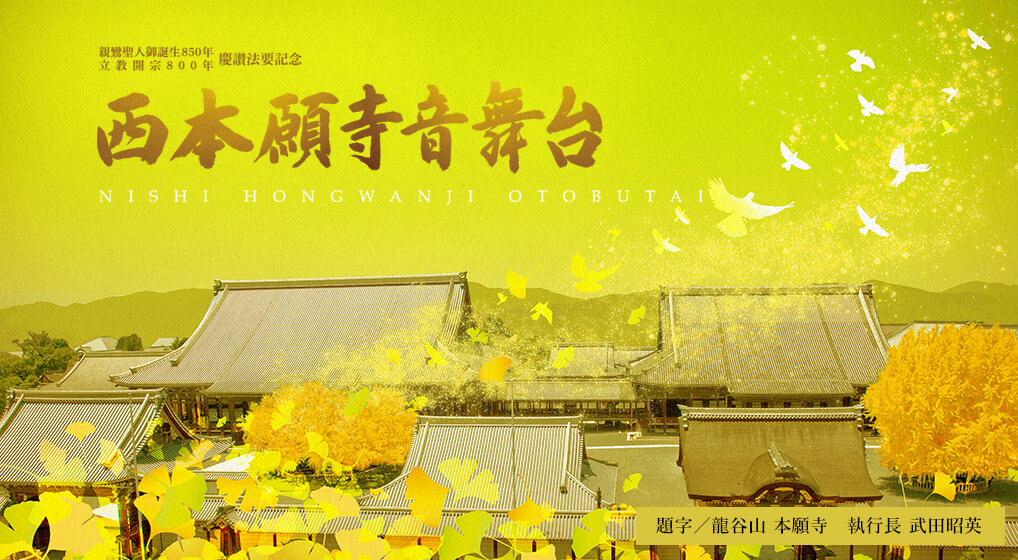Information
This event will be broadcast on MBS and other JNN stations nationwide in late October.
Artists

Katsumi KANAMARU(Conductor) / OTOBUTAI Orchestra / BIWAKO HALL Vocal Ensemble / SILT(Sand art performance team)
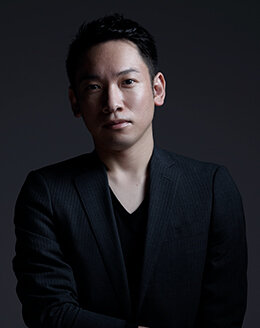
Takatsugu MURAMATSU
【Music Director】
Muramatsu has been acknowledged for his talent as a music composer from an early age, composing over 70 music for movies, TV dramas, theatrical plays, musicals, etc. He received multiple awards including the Japan Academy Award for Outstanding Music for two consecutive years. His activities are diverse and has also written music for artists like Mariya Takeuchi "The Song of Life", Aoi Teshima "Tadaima", and Josh Groban "Konosaki No Michi". Recently, he has been expanding his field globally with Studio Ghibli's "When Marnie Was There" and "Mary and the Witch's Flower", "Lu Over the Wall", "Gyoko no Nikuko-chan" and IOC's animation film "Tomorrow's Leaves".
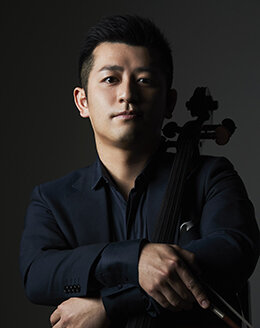
Dai MIYATA
Miyata was awarded the Grand Prix of the 9th Rostropovich Cello Competition in 2009 and became the very first Japanese to win such prestigious award. To this day, he has won the first prize in every competition he participated in. As Japan's leading cellist active globally, Miyata's stunning performance has received high praise from numerous composers and musicians such as the world-renowned Maestro, Seiji Ozawa. He graduated from the Conservatoire de Musique de Geneve in Switzerland and the Kronberg Academy in Germany. He performs with A.Stradivarius's cello "Cholmondeley"1698, rented from Ueno Fine Chemicals Industry.
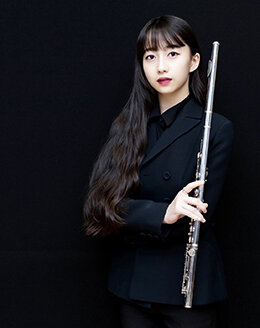
Cocomi
Cocomi began learning the violin and piano at the age of three, and flute at the age of eleven. She is currently studying under Hiroaki Kanda, principal flutist at NHK Symphony Orchestra. She also completed Vladimir Ashkenazy and Emmanuel Pahud's masterclasses. Cocomi has been awarded multiple prizes and In 2019, she won the First Prize in the Wind Instruments Division, Modern French Music Award along with the highest prize awarded at Nihon Sogaku Competition. From April 2020, Cocomi is attending the College Diploma Course at Toho Gakuen College, Department of Music.
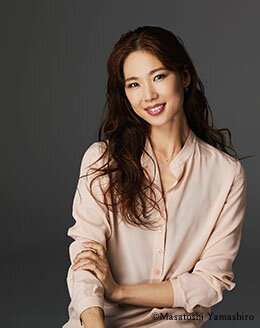
Shoko NAKAMURA
Nakamura began her ballet training at the age of six. In 1996, she won the First Prize at the Lausanne International Ballet Competition and pursued her studies in Germany. She joined the Vienna State Opera in 2000 and was promoted to soloist in 2002. From 2007, she became the Principal Dancer with the Berlin State Ballet for 6 years and the Principal Dancer with the Hungarian National Opera until 2015 for approximately 2 years. She joined K Ballet Company in September of 2015 where in 2020, she was granted the title of Principal Dancer Emeritus. Nakamura has received multiple international and Japanese awards and is currently active as a freelance dancer.

Ken NISHIKIORI
Nishikiori graduated from Kunnitachi College of Music and studied in Milan as the overseas trainee artist of Japan Agency for Cultural Affairs, and in Vienna as a scholarship student of the Gotoh Memorial Foundation. Since his debut in 1986 with Camille in "The Merry Widow", he has been highly acclaimed for his performance in the operas and as a soloist in sacred music, Beethoven's "Ninth"etc., winning numerous awards. Since 2002, Nishikiori has been producing operas and in 2015, his 6th project of Mozart's "Die Entführung aus dem Serail" went on stage. His activities are diverse including performing at NHK's New Year's Eve Singing TV program and appearing on FM radio as a presenter.
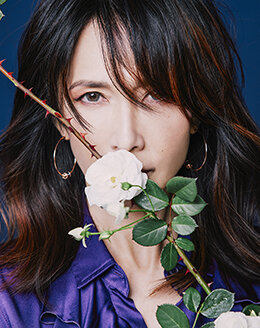
Shizuka KUDO
Kudo made her solo debut on August 31, 1987, with "Kindan no Telepathy" and the releases that followed including "FU-JI-TSU" and "MUGO・N...Iroppoi" recorded a major hit. She has released 42 singles, 17 original albums, and 3 cover albums. Shizuka Kudo is one of the popular female singers representing the late 1980s to early 1990s. Her multi-faceted talent is revealed through her performance in music, dramas, and TV commercials and also in painting and jewelry designing. She is a member of the Nika Association Paintings Division and also writes lyrics under the name of "Aeri". Kudo's second cover album of Miyuki Nakajima's "Aoi Honoo" is in store now.
Information
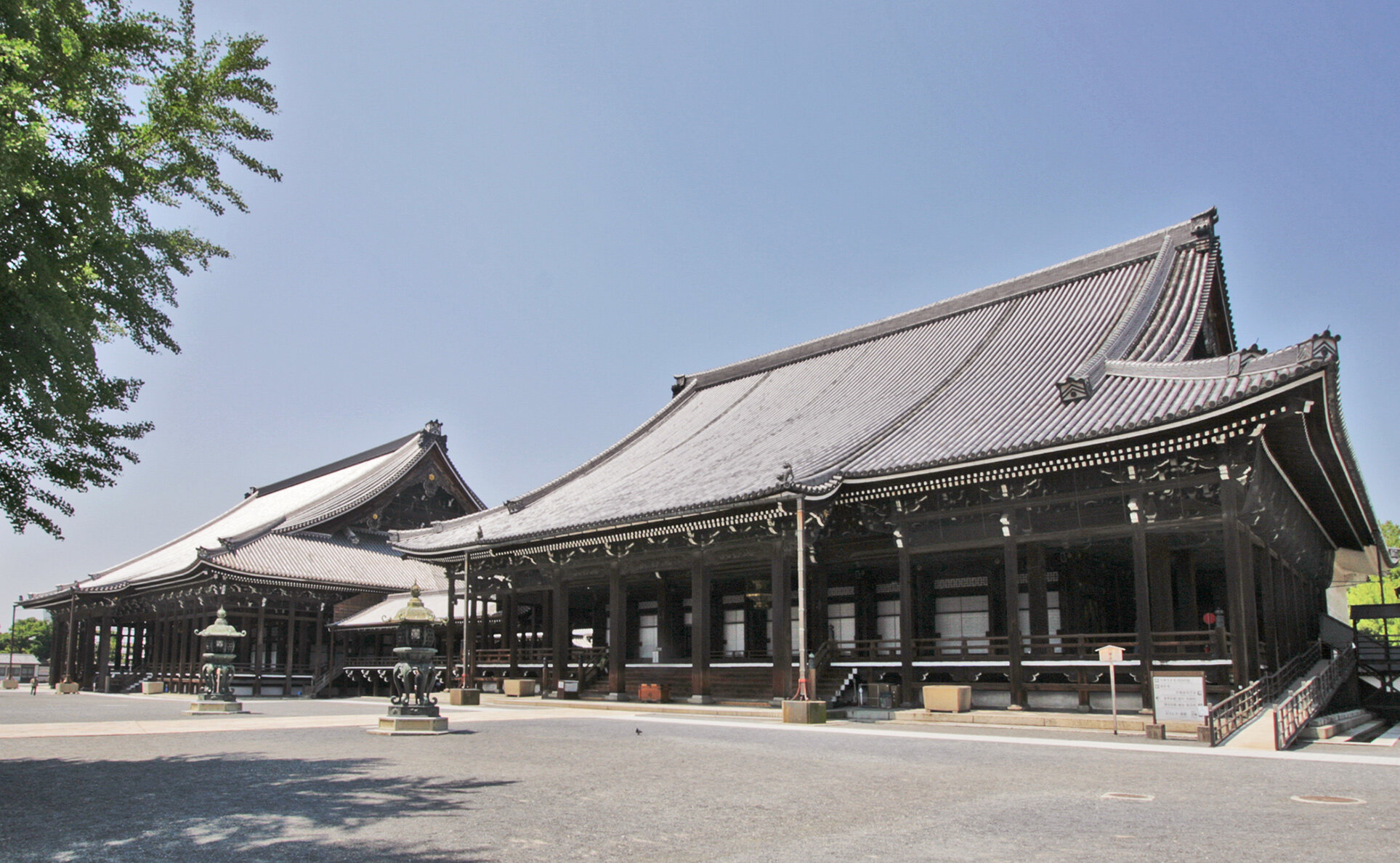
History of Hongwanji
Hongwanji is the head temple and headquarters of Jodo Shinshu Hongwanji-ha. The official name is Ryukoku-zan Hongwanji, and is commonly referred as Nishi Hongwanji.
The Jodo Shinshu teaching was established by Shinran Shonin (1173-1263) during the middle of Kamakura Period (c. 1185-1333),Shinran Shonin was born in 1173 at Hino in the southeast of Kyoto, received ordination and entered the priesthood at the age of 9 at Shoren-in Temple. He underwent training and studied at Enryakuji on Mount Hiei for twenty years. At the age of 29, he left the mountain to seek Genku (Honen) Shonin and under his guidance, he came to entrust himself to Amida Tathagata's Primal Vow that pledges to save every living being by guiding them to the Buddha's Pure Land. The working of the Vow is expressed by the Nembutsu, that is, our own recitation of the Buddha's Name "Namo Amida Batsu." This Nembutsu teaching was prohibited by Imperial Edict and he was banished to Echigo at the age of 35. Pardoned in 1211, he and his wife, Eshinni, chose to go to the Kanto region to spread the Nembutsu teaching. In his latter years, he returned to Kyoto to complete his major work, The True Teaching, Practice, and Realization of the Pure Land Way (Kyogyoshinsho), which elucidates the Nembutsu of Other Power and thereby forms the foundation for the Shin Buddhist Tradition. He passed away on January 16, 1263 at the age of 90.
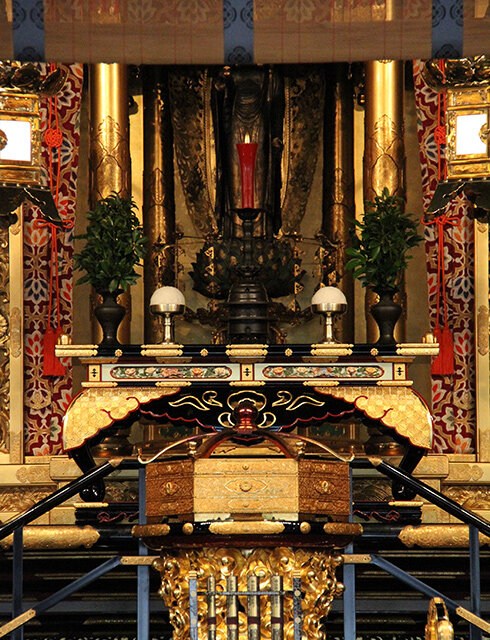
Kakushinni, Shinran Shonin's daughter, together with his disciples, erected a mausoleum in his memory at Otani, Higashiyama, Kyoto and this became the foundation for the Hongwanji.
The 8th shushu (head priest) of Hongwanji, Rennyo Shonin (1415-1499), greatly expanded the circle of propagation. During the era of the 11th shushu Kennyo Shonin(1543-1592), the Hongwanji returned to Kyoto and was reestablished at Horikawa Rokujo where it remains today.
On the precincts of Hongwanji are the Amidado (Hall of Amida Buddha), Goeido (Founder's Hall), Karamon, Shoin, Hiunkaku and other structures, many of which have been designated as National Treasures and Important Cultural Properties of Japan. In addition, the Hongwanji received the designation as a UNESCO World Heritage in 1994 as part of the Historic Monuments of Ancient Kyoto.
